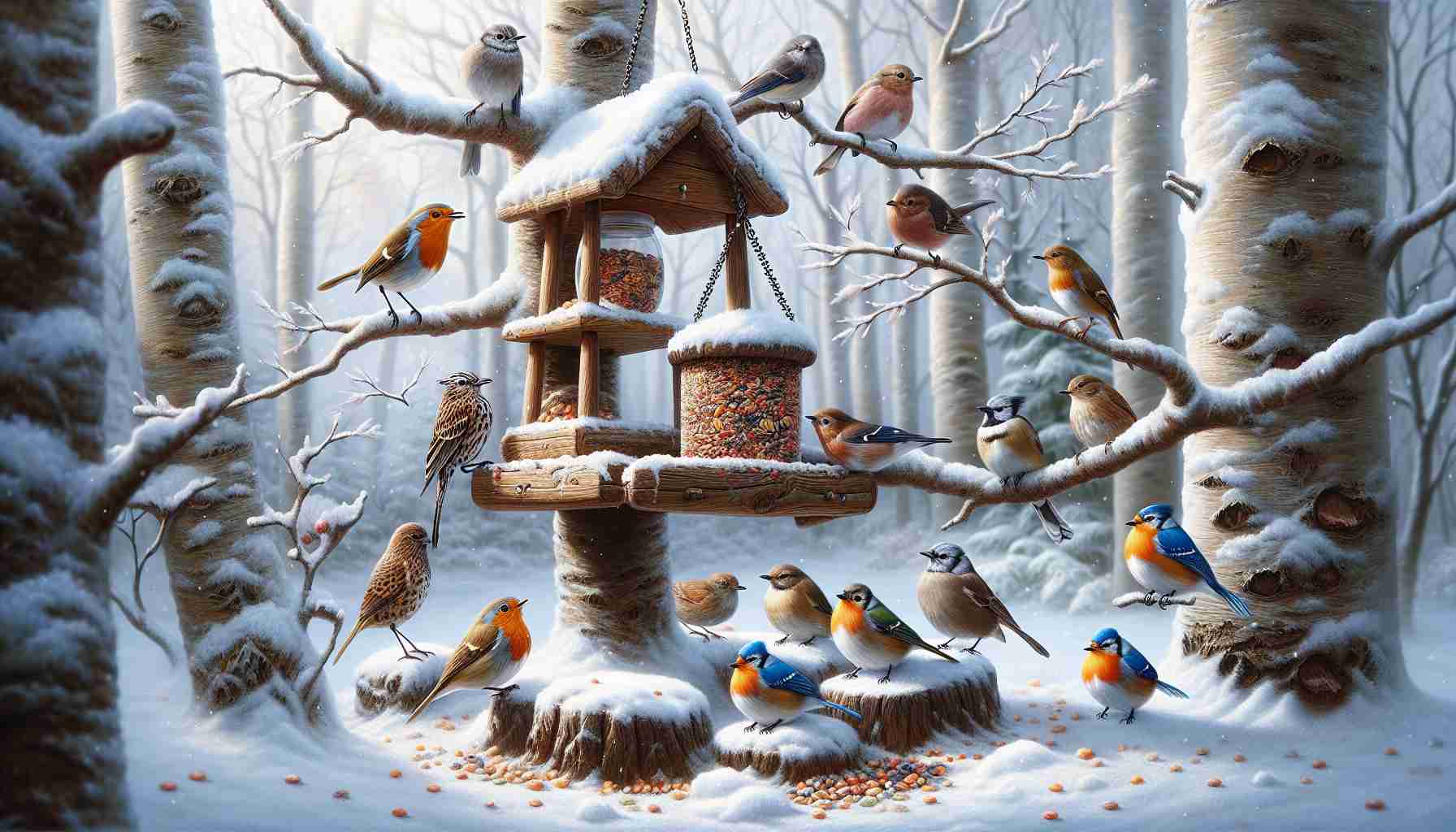As the cold weather settles in, feeding birds can provide a unique opportunity to engage with nature right from the comfort of your home. It not only enhances your understanding of local avian species but also introduces you to seasonal visitors that flock to your area during winter months. The Vermont Fish and Wildlife highlights the value of bird watching, especially enjoying species like the black-capped chickadee and blue jay.
To create an inviting atmosphere for these feathered friends, consider making your own birdseed blend. Using black oil sunflower seeds mixed with thistle or cracked corn can draw a diverse range of birds. Suet is also effective for attracting woodpeckers and chickadees.
Different feeder types will cater to various bird sizes; hopper feeders suit larger birds, while tube feeders are better for smaller ones. Place your feeders near natural cover to help birds feel safe and secure.
Maintaining cleanliness is crucial. Keep feeders stocked with daily portions and clean them every few weeks to prevent the spread of diseases.
Be aware of challenges, such as local predation risk or the presence of bears. It is vital to monitor feeders and remove them if bears are spotted, as they may become accustomed to human food sources, leading to dangerous encounters.
Lastly, while enjoying the birdwatching experience, consider recording your sightings for community science projects to help with bird population studies. Monitoring these interactions not only fosters a love for birds but contributes to vital conservation efforts.
Engage with Nature: Tips and Hacks for Winter Bird Feeding
As winter tightens its grip, many outdoor enthusiasts choose to enhance their connection with nature by feeding birds. This activity not only enriches your backyard experience but also supports local avian populations during their challenging survival months. Here are some valuable tips, life hacks, and interesting facts to maximize your birdfeeding experience:
1. Craft a Custom Birdseed Mix
Creating your own birdseed blend can be a fun and cost-effective way to attract a variety of birds. Start with a base of black oil sunflower seeds, as they are highly favored by many species. Then, add ingredients such as peanuts, safflower seeds, or dried fruit to make your mix irresistible. Keep in mind that different birds have different preferences; for instance, goldfinches love nyjer (thistle) seeds, while cardinals are drawn to sunflower seeds and corn.
2. Use Natural Materials for Feeders
If you are feeling crafty, consider making your own bird feeders using natural materials. For instance, hollowed-out logs, pinecones coated in peanut butter, or even milk cartons can be transformed into unique feeders. Not only is this an eco-friendly option, but it also provides birds with an additional layer of safety by blending in with their natural habitat.
3. Consider the Location
The placement of feeders is key to attracting birds. Position feeders near bushes or trees where birds can perch safely before approaching the feeder. This not only provides them with a sense of security from predators but also encourages them to visit more frequently.
4. Water is Essential
Provide a source of fresh water, especially in freezing temperatures when natural water sources may be scarce. A birdbath heated with a birdbath heater can be a perfect solution, ensuring that your feathered visitors have access to vital hydration.
5. Keep a Birdwatching Journal
As you watch your feathered friends, consider maintaining a birdwatching journal. Documenting your sightings not only allows you to track which species visit your feeder but can also be a fun way to engage children in nature. Additionally, your observations can contribute to community science initiatives aimed at studying bird populations and migration patterns.
6. Join Local Birdwatching Groups
Connecting with local birdwatching organizations can enhance your experience. These groups often host events, share tips, and provide insight into local bird species. Plus, you’ll meet like-minded individuals who share your passion for birdwatching. Check out resources from the National Audubon Society to find a chapter near you.
7. Be Mindful of Feeding Wildlife Responsibly
While it’s a joy to feed birds, it’s important to do so responsibly. Avoid leaving food out overnight to deter unwanted nocturnal visitors such as raccoons or skunks. If large birds, such as crows or jays, become a nuisance, try adjusting your feeder size or feed type to be less appealing to them.
Interesting Fact: Did you know that some bird species can recognize individual humans and remember who regularly feeds them? This remarkable behavior highlights the intelligence of many avian species and can foster a unique connection between birdwatchers and their feathered neighbors.
Bird feeding during winter can be more than just a hobby; it’s an opportunity to embrace nature and contribute to conservation efforts. By following these tips and exploring your local birdlife, you can enhance your own experience while supporting the winged wonders that share our environment. For more resources on birdwatching and wildlife support, explore Vermont Fish and Wildlife.

